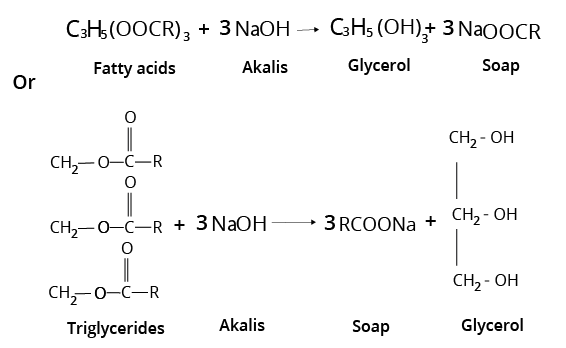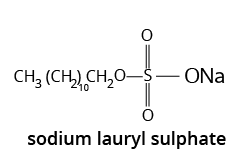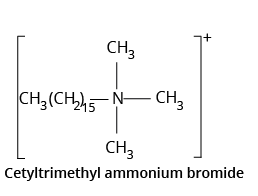Revision Notes on Chemistry in Everyday Life for NEET 2026- Free PDF Download
Students in class 12 learning Chemistry sometimes find it hard to practice the chapter for the NEET test. In the Chemistry in Everyday Life Class 12 Notes, students will get an overview of the chapter covering drugs, medicines, therapeutic effects, and other aspects. Further, the chapter covers topics on the functions of enzymes. Everything in this Chemistry in Everyday Life class 12 notes is explained in clear language. While practising for the test, students will learn about the role of drugs and other aspects of medicines.
This Chemistry in Everyday Life notes is created by subject matter experts of Vedantu ensuring students understand the chapter finely. Using these notes, they can clear their doubts which are quite common while preparing for the test.
Access NEET Revision Notes Chemistry Chemistry in Everyday Life
Chemicals in Medicine
Analgesics:
These are neurologically active drugs that reduce pain without causing any impairment of consciousness, mental confusion in coordination and other disturbances of the nervous system.
Analgesics are Broadly Classified Into Two Sub Groups:
Non-narcotic drugs
Narcotic drugs
Non-narcotic Analgesics:
These are also known as non-addictive drugs. Aspirin and paracetamol or some of the examples that belong to this class.
The synthesis of prostaglandins chemicals stimulates the inflammation in the tissue and causes pain, aspirin prevents the synthesis of these chemicals and helps in abolishing pain.
Non-narcotic drugs are effective for skeleton pain also. Thus, helping the patients dealing with arthritis.
There are certain other effects that non-narcotic analgesics produce such as reducing fever and acting as antipyretics.
These analgesics also have utility in the prevention of platelet cognition and due to this anti-blood clotting action, they are useful in the prevention of heart attacks.
Narcotic analgesics:
This class of analgesics are also called sedatives. If taken in small doses, they work to relieve pain and produce sleep.
High doses of narcotic analgesics are poisonous in nature as high doses can produce stupor, coma, convulsions and ultimately death.
Morphine and many of its homologues are sometimes referred to as opiates as they are obtained from the opium poppy.
These are mainly used to relieve postoperative pain, cardiac pain and pains of terminal cancer and during labour.
Tranquilisers:
These types of drugs are also neurologically active drugs; they affect the message transfer mechanism that occurs from nerve to receptor.
In situations of stress, mild and severe mental diseases tranquilizers are used. They function to relieve anxiety, stress, and irritability and induce a sense of well-being.
These neurologically active drugs are an essential component of sleeping pills. There is a variety of tranquilisers which vary in function by different mechanisms.
One such class is antidepressant drugs. Noradrenaline is one of the neurotransmitter that plays a role in mood changing.
The level of noradrenaline being less due to some reason, the signal sending activity between nerve to receptor also becomes slow and the person feels sadness or can suffer from depression.
To overcome such situations antidepressant drugs are needed. These drugs inhibit the enzymes that catalyse the degradation of noradrenaline.
These drugs function in such a manner that enzymes are inhibited and the neurotransmitter is slowly metabolised and activates its receptor for a longer period of time.
Thus, overcoming the effect of depression in the body. Examples of antidepressant drugs are iproniazid, phenelzine, equanil, meprobamate etc.
Antiseptics:
Antiseptic and disinfectant, both belong to the same class of chemicals which either kill or prevent the growth of disease causing microorganisms.
Antiseptics are applicative for living tissues like bones, cuts, ulcers or diseased skin surface. Antiseptics are for external use only and are not ingested.
Common examples of antiseptics that we use in our day today life is dettol. Dettol is a mixture of Chloroxylenol and terpineol.
The 2 to 3% solution of iodine in alcohol water mixture is called as tincture of iodine is also an effective antiseptic.
Iodoform can also be used as an antiseptic for wounds and boric acid in its dilute aqueous solution is also a weak antiseptic for eyes.
Disinfectant:
These chemical substances also kill microorganisms and stop their growth but these are harmful for living tissues.
These were applied to inanimate objects like floors, drainage systems, toilets, instruments.
There are certain substances that can be used as both antiseptic and disinfectant but by varying their concentrations. For example, 0.2% solution of phenol is an antiseptic while 1% solution of phenol is disinfectant.
Antimicrobials:
Antimicrobials destroy or inhibit the pathogenic action of microbes such as bacteria, fungi, parasites.
Antimicrobial is an umbrella term that comprises antibacterial drugs, antifungal drugs, anti-parasitic drugs and antiseptic disinfectant antibiotics in it.
Antifertility Drugs:
The chemical compounds which are used to prevent unwanted pregnancies in women are called antifertility drugs.
These are also referred to as birth control pills which contain a mixture of synthetic oestrogen and progesterone derivatives. Example: norethindrone, ethynylestradiol (novestrol), mifepristone.
Antibiotics:
These chemical substances are produced wholly or partly by chemical synthesis.
Antibiotics in their low concentration holds the capability to inhibit the growth of microorganisms and destroy them by hindering their metabolic processes.
Antibiotics are Classified Into Two Sub Groups on the Basis of Their Mode of Action:
Bactericidal antibiotics: Antibiotics that can kill the microorganisms completely are termed as bactericidal antibiotics. Example: penicillin, ofloxacin etc.
Bacteriostatic antibiotics: These types of antibiotics have inhibitory effects on the growth of microorganisms. Example: erythromycin, chloramphenicol etc.
The range of bacteria or other pathogens affected by a specific antibiotic is expressed as its spectrum of action.
On the Basis of Their Range of Action, Antibiotics are Categorised Into Two Types:
Broad spectrum antibiotics: Antibiotics that are effective against a wide range of gram-positive and gram negative bacteria. Example- ampicillin, amoxycillin etc.
Narrow spectrum antibiotics: Antibiotics which are effective against either gram-positive or gram-negative bacteria. Example: Penicillin-G. The antibiotics which are effective against only a single organism or a disease are referred to as limited spectrum antibiotics.
Antacids:
The chemical substances which eliminate the excess acid present in the stomach and raise its pH to appropriate levels are called antacids.
Sodium hydrogen carbonate, also known as milk of magnesia, is a common antacid. Other examples include a mixture of aluminium and magnesium hydroxide, ranitidine etc.
Antihistamines:
The chemical substances that interfere with the natural action of histamine in our body are called antihistamines.
These drugs compete with the histamine molecule for binding sites of receptors where histamine influences its effects. Example- cetirizine, terfenadine etc.
Chemicals in Food:
Preservatives:
The chemicals that prevent the growth of microbial organisms on food and save it from spoilage are called food preservatives.
The common food preservatives that are widely used are salt, sugar, vinegar, oils, sodium benzoate etc.
Artificial Sweetening Agents:
The chemical compounds that are used as an alternative for sugar in food and beverages are termed as artificial sweetening agents. They do not have any nutritive value; they just add taste to food items.
Examples-
Aspartame is the most widely used artificial sweetener and it is about 100 times sweeter than natural sugar. Chemically it is methyl ester of dipeptide formed by combination of aspartic acid and phenylalanine. The major drawback of aspartame is that it is limited to only cold foods and soft drinks as the structure of aspartame gets decomposed at high temperature.
Alitame: This is also a high potency sweetener and is more stable in structure than aspartame but this is so potent that the control of sweetness is difficult while using it.
Sucralose: This is a trichloro derivative of sucrose. Sucrolose looks and tastes like natural sugar only and is stable at cooking temperatures. It doesn’t have any nutritive value but doesn’t provide any calories in the diet.
Saccharin: Chemically it is ortho-sulfabenzamide useful as an effective alternative for sugar for diabetic patients. It helps to control calorie intake caused by sugar in diet.
Antioxidants:
The important and necessary chemicals that act as food additives and help in the preservation of food by retarding the action of oxygen on food.
They function in such a manner that they are more reactive towards oxygen than the food material they are protecting.
They increase the shelf life of food items. For example, BHT-butylated hydroxytoluene, BHA- butylated hydroxyanisole.
Chemicals in Cleansing Agents:
Soaps:
Soaps are sodium or potassium salts of long chain fatty acids. Example-stearic acid, oleic acid, palmitic acid etc.
The process of formation of soap is called as saponification where soap containing sodium salts are produced by heating with aqueous solution of sodium hydroxide base.
The reaction of saponification is shown as follows:

Image: Saponification
Soaps do not work in hard water and do it work as a cleansing agent as hard water consists of calcium and magnesium ions that form calcium or magnesium complexes which are insoluble in water and just stick to the fabric as the gummy mass.
The reaction for the same is shown below:

Image: Action of soap in hard water
Soaps cannot be used in acidic solutions also as acid present in solution precipitate the insoluble free fatty acids which adhere to the fabric and deplete the capability of soap to remove oil from fabrics.
Synthetic Detergents:
They can be used in both soft water and hard water. Synthetic detergents contain all the properties similar to soap without actually containing soap in them.
On the basis of their structure, synthetic detergents are classified into three main types:
1) Anionic Detergents:
They are called anionic detergents because the large portion of their molecule that is involved in the cleansing action is anion.
Chemically, they are sodium salt of sulphonamides, long chain alcohols or hydrocarbons.
They are widely used in household detergent and toothpaste. Example- sodium lauryl sulphate etc.
The structure of sodium lauryl sulphate is shown below:

Image: Sodium Lauryl Sulphate
2) Cationic Detergents:
The large of these detergents is cation and it’s the cationic portion that acts in the reaction.
Chemically they are quaternary ammonium salts of amines with acetates, chlorides, bromides or other ions.
They have great germicidal properties but are expensive in cost. That’s why they are of limited use. Example: cetyltrimethylammonium bromide, its structure is as follows:

Image: Cetyltrimethylammonium Bromide
3) Non-ionic Detergents:
These types of detergent donor contain any ions. They consist of alcohols as the main component and are of high molecular masses.
They are used in dishwashing detergents. Example: chemical compound formed from the reaction of stearic acid with polyethylene glycol.
The formation reaction of non-ionic detergent is as follows:

Image: Non-ionic detergent
Importance of Chemistry in Everyday Life class 12 Notes for NEET
Chemistry in Everyday Life carries different aspects of the subject that is also covered in NEET preparation. In the chapter, the student will understand that drugs low in molecules and mass substances can produce some biological responses when interacting with the body. Then there is the Therapeutic effect, a beneficial effect of drugs, which also acts as the treatment for any disease symptoms and helps cure the disease.
Students using chemistry in everyday notes for NEET will be introduced to the role of drugs, which can either increase or decrease the overall role of enzymes. Further, they get information about the receptors as Drug Targets, which involves interchanging messages between two neurons. The chapter presents the classification of antimicrobial drugs based on the control mode of microbial diseases. These include- Bacterial Drugs and Bacteriostatic drugs.
The introduction to food additives will help students to know different types. They will get introduced to Food Preservatives, Food Colours, Nutritional Supplements, and others. Using chemistry in everyday notes for neet will help students get a detailed view of the chapter and support in practice.
Benefits of Chemistry in Everyday Life Notes PDF
Students can download the Chemistry in Everyday Life notes pdf version to practice anytime and anywhere before the NEET. Some other benefits are-
Vedantu's experts have meticulously explained the classification of antimicrobial drugs, food additives, and different types of food additives. Students can acquire a complete description of these topics and use the knowledge to create their conceptual basis.
Students will learn about the different aspects of drugs used in chemistry.
Students can grasp every topic area as part of the last-minute version. The topic is finely conceptualised along with diagrams and graphs that can work best for the NEET preparation.
Download Chemistry in Everyday Life Notes PDF
Do you want to ace your NEET entrance tests and gain admission to the best medical institution? Download the Chemistry in Everyday Life notes pdf from Vedantu prepared by subject experts. Downloading these revision notes can help students with last-minute revision. Students can get these Chemistry in Everyday Life notes in PDF from the official website of Vedantu.
NEET Chemistry Revision Notes - Chapter Pages
NEET Chemistry Chapter-wise Revision Notes | |
Chemistry in Everyday Life Notes | Classification of Elements and Periodicity in Properties Notes |
Other Important Links Related to NEET Chemistry in Everyday Life
Other Important Links for NEET Chemistry in Everyday Life |
FAQs on Revision Notes on Chemistry in Everyday Life for NEET 2026
1. What are the uses of Chemistry in Everyday Life?
Chemistry is an important aspect of our daily lives. This discipline of study is plainly visible in several aspects of human existence, including as the food we eat, the air we breathe, and in the different cleaning agents we use.
2. What are different types of Food Additives?
There are different types including-
- Artificial Sweetening Agents: Chemical substances that give food a sweetening effect and enhance its flavour.
- Food Preservatives: Chemical compounds that are added to food to avoid spoiling due to microbial development.
- Nutritional Supplements: These are those substances added to the food that can improve the overall nutritional value.
3. What are different types of Soaps?
Toilet soaps are made with higher quality fats and oils, and extra care is taken to remove excess alkali.
- To make transparent soaps, dissolve the soap in ethanol and then evaporate the excess solvent.
- Medicated soaps contain medicinally valuable ingredients. Deodorants are sometimes added to soaps.
- Glycerol is added to shaving soaps to keep them from drying out too quickly. Rosin gum is used in the manufacturing process. It produces sodium rosinate, which lathers nicely.
4. What are the advantages of using Soaps?
Soap acts as the cleaning agent that is totally biodegradable, which means that microorganisms in sewage water can completely oxidise soap. As a result, soaps do not contribute to pollution.

























